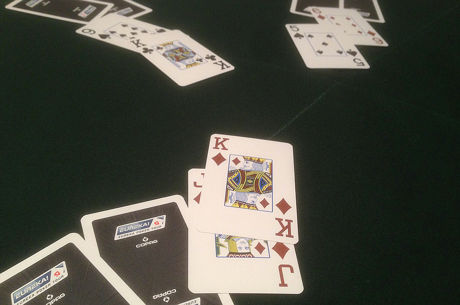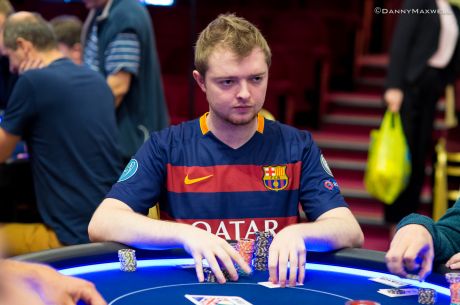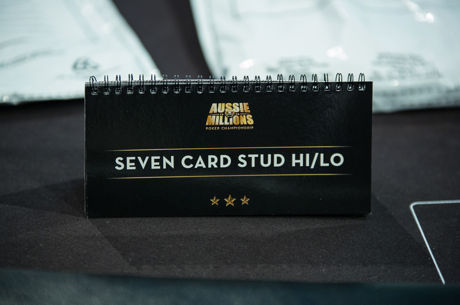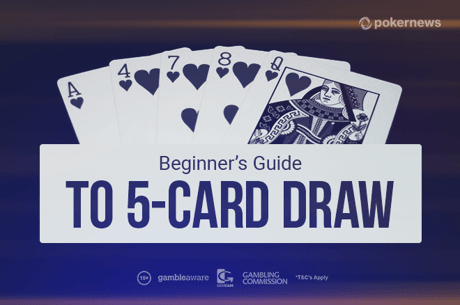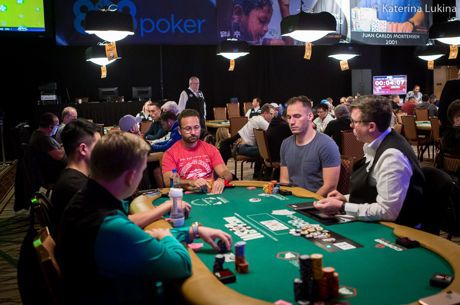Five No-Limit Hold'em Lessons Learned from Non-NLHE Games
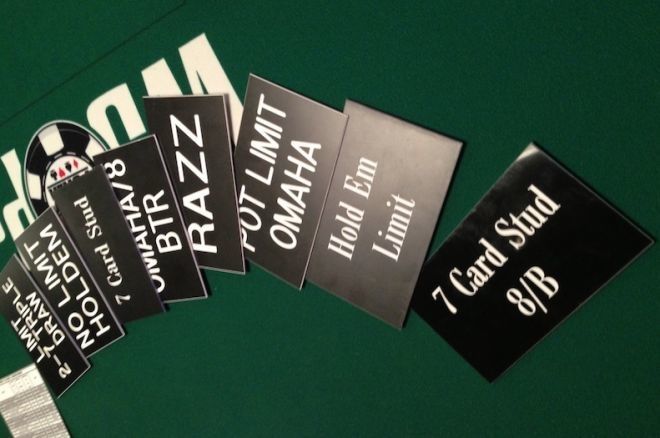
The World Series of Poker has a way of reminding us that there's more to poker than just no-limit hold'em, even if NLHE is just about everyone's favorite game to play.
Suddenly we're all locked in following updates in deuce-to-seven no-limit draw events, the "dealer's choice" and mixed-game tournaments, and asking Kevmath if today's razz final table is going to be live streamed. (It will be, won't it, Kev?)
Speaking of razz, I liked the point Adam Owen made to conclude the discussion of razz strategy he and Ian Shaw had with Remko Rinkema yesterday.
"If I were to teach a complete beginner the rules of a poker game, I would start with razz," said Owen, who went on to note how the game "teaches you lot of good principles for poker," including how "to bluff, to steal, and to resteal."
That observation got me thinking about other lessons or "good principles for poker" players can learn from non-NLHE games, including ones that directly apply to no-limit hold'em.
Like many these days, hold'em was the first game I played seriously, although I began with fixed-limit hold'em before moving over to no-limit. Truthfully, five-card draw was the first poker game I learned as a kid (a good one for learning hand rankings), but hold'em was the first variant I played seriously �� that is, for money that was meaningful, and while making a genuine effort to learn and improve.
All of the other variants followed, with pot-limit Omaha and razz emerging as a couple of favorite non-NLHE games for me. As I began to learn and study other games, I soon realized how they do open your "poker mind" up to various "good principles" that apply to most poker games, including no-limit hold'em.
Here, in brief, are five lessons about no-limit hold'em (and poker, generally speaking) that non-NLHE games can teach you.
1. Pot Odds (Limit Hold'em)
I mentioned learning LHE before NLHE, so this was a lesson I was able to carry over when first starting out with no-limit �� being able to calculate pot odds.
Understanding pot odds involves comparing the size of a bet to the size of the pot and from that figuring out the "price" being offered to you to call the bet. LHE is a game that constantly presents "pot odds" problems to solve �� and rapidly, too, given the usually quick pace of the game. The problems are usually not too complicated, and come so often they provide new players a lot of practice honing the skill.
Say you're in a $2/$4 LHE game. You're in the big blind and watch the cutoff raise (to $4), the button call, and the small blind call. You can readily see there is $14 out there (including your big blind) and you need to call $2 more to stay in the hand �� 7-to-1 pot odds.
It's only you check-calling bets from the original raiser on the flop ($2) and turn ($4), then you check again and your opponent bets $4 one more time. Now there's $32 out there and it's $4 to call �� 8-to-1 pot odds.
These calculations become second nature in LHE, and help you make them in NLHE as well.
2. Draws v. Made Hands and Equity (Pot-Limit Omaha)
This one took a little time to learn, but pot-limit Omaha presents many postflop situations where you're playing big draws that sometimes have even better "equity" than made hands. Flopping a big "wrap" draw in PLO might afford you as many as 16 or 20 outs, making you a favorite versus most made hands.
Face that situation enough times, and you begin to appreciate the power of big draws. Say in NLHE you have A?K? and are looking at a Q?7?3? flop. You're actually a small favorite versus a player holding Q?J? for top pair of queens, and if that seems a likely holding for your opponent (or something of equivalent strength), you might well play the flop more aggressively.
This lesson in equity is one that comes up in fairly easy-to-see ways in razz, too, where a player can be technically behind but be drawing to something better �� see "Make Razz Great Again" for more about that.
3. Position (2-7 Triple Draw)
Position is obviously important in no-limit hold'em, but go play some deuce-to-seven triple draw to appreciate even more the benefits of acting last.
Why is position even more obviously important in 2-7 triple draw? Because not only are you getting to act last on the betting rounds, you get to see your opponent(s) draw before you have to as well. In a lot of cases, knowing how many cards your opponent has discarded (or if he or she is standing pat) is more meaningful information to have than a leading bet provides.
Badugi �� also a triple draw game �� also obviously helps reinforce this lesson about position which you can carry back to your NLHE game.
4. Blockers (Stud, Stud Hi-Low, Razz)
In stud games like seven-card stud, seven-card stud hi-low, and razz, you're constantly keeping track of everyone's "up cards" so as to know what cards have already been dealt and thus cannot subsequently be drawn by you or anyone else. Or you should, anyway. (For some help in this area, check out Ashley Adams' recent article "Remembering Cards in Seven-Card Stud.")
Keeping track of "what's out" helps you decide whether or not to pursue flush or straight draws, the likelihood of others having certain hands or being improved by new cards, and so on. All of these up cards essentially function as "blockers," as do your down cards.
Blockers can also occasionally be significant in no-limit hold'em, as you use the knowledge of your two hole cards to help narrow opponents' ranges. See Carlos Welch's article "Five Examples of Using Blockers to Improve Hand Reading" for some specific examples of blockers' importance in NLHE.
5. Bluffing and Reading Others' Bluffs (2-7 NL Single Draw)
Finally, bluffing is obviously an important element in all poker variants, but deuce-to-seven no-limit single draw is a game that can really open your eyes to how bet-sizing and position �� when coupled with a player deciding to stand pat �� can quickly create a believable bluffing story.
Last week Jason Mercier was discussing 2-7 NL single draw strategy with us right here on PokerNews, then this week he went on to win the $10,000 2-7 Draw Lowball Championship and fourth career WSOP bracelet.
Mercier noted how frequently 2-7 NL draw involves bluffing and/or sussing out whether or not your opponent is bluffing. "In this game," says Mercier, "it is almost always about asking yourself, 'do I have the best hand, or does he?'"
Learn 2-7 NL draw and play for a while, and you'll likely find yourself bluffing more often than you do in NLHE (or "snowing," as it's often called in both 2-7 NL and 2-7 triple draw). You'll also more frequently have to piece together evidence to decide whether or not your opponent is bluffing �� all of which helps when you go back to NLHE and those bluffing spots arise for yourself or your opponents.
What are some other non-NLHE games that can teach "good principles" for no-limit hold'em?
Want to stay atop all the latest in the poker world? If so, make sure to get PokerNews updates on your social media outlets. Follow us on Twitter and find us on both Facebook and Google+!

